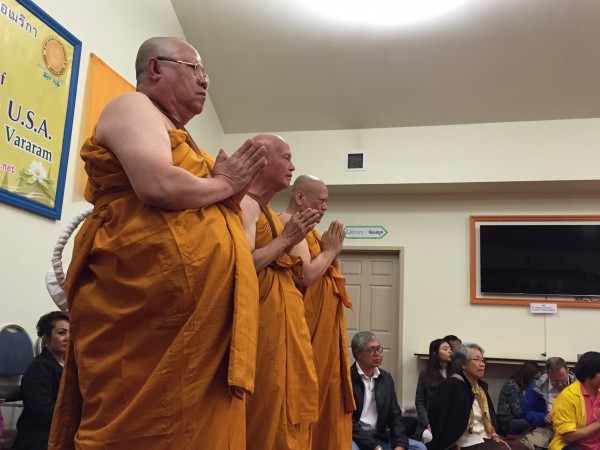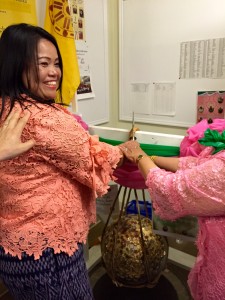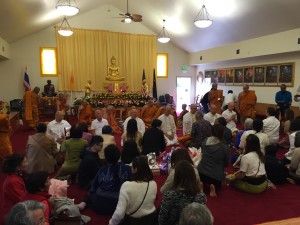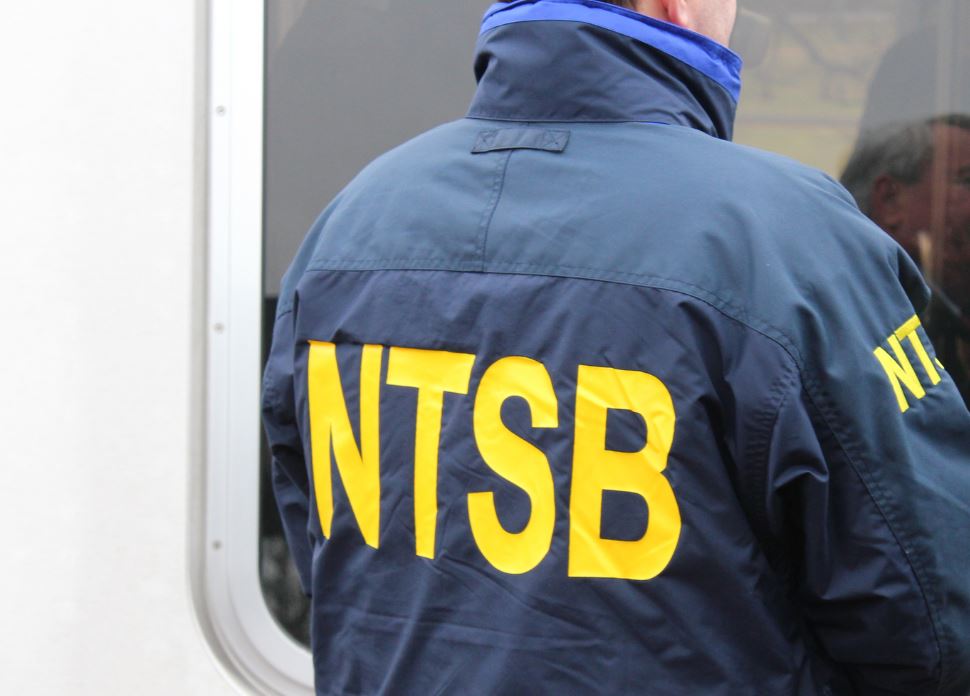For the first time in Alaskan history, a Thai Buddhist temple in Anchorage has been fully consecrated, or made holy. It was a landmark event for Buddhists from the state and around the world.

A monk from Thailand speaks to the packed small sanctuary over a mic, a massive gold Buddha shinning from the wall behind him. People spill out the door, smartphones held high, trying to get photos of the high-ranking monks in their deep orange robes. The crowd responds in unison to his words and actions.
They’re watching the official consecration of the temple, when the room on the side of an old log house in midtown Anchorage transforms from a human space for prayer and meditation to a holy space the Buddha can enter. The temple has been there for 20 years, but before it could only be used for limited purposes, like meditation.
During the ceremony nine granite balls called loknimit are buried around the sides and center of the temple to mark the sacred space.
In the hallway by the door, one of the balls is suspended over a hole. It’s covered in bits of gold leaf and coins held on with Vaseline.
Chollada Jarupakorn, who comes to Wat Alaska Yanna Vararam to meditate, says donating to the temple and applying the gold leaf is an honor. “They believe if they do that then next life they will have a good life,” she explains. “Or even this life. You know, you are doing a good deed.”
And it has other perks… “Because the name of that stone is loknimit, you can always make a wish.” She wished for a happy life.

The ball has been hanging over the hole for more than two years now, waiting for the official consecration.
When it’s finally time, Sukkee Edmonds, from Thailand, approaches the ball with an ornate curved blade and starts hacking away at the thin, dried vines, called rattan, that hold it up. The crowd claps and cheers as she cuts away at the holder, then the ball drops into the hole with a soft thud.
Edmonds’ excitement is palpable; even when the crowd wanders away, she has trouble finishing her sentences.
“I’m so happy. So happy that’s all.”
Edmonds traveled almost 24 hours just for the three-day event. Only one temple is consecrated per year in this sect of Buddhism, and many people say it’s a rare honor to be able to attend. This year its in Alaska, next year in Arkansas. The event attracts lay people and monks from around the world.
Edmonds and her friends raised more than $4,300 for the temple and for the honor of releasing the ball. For her, it’s an event of a lifetime.
The ceremony also marked the first time that Buddhist monks could be officially ordained in Alaska.

Seven soon-to-be monks gather in the temple for their ordination, dressed all in white, and join in chants. Before changing into their official orange robes, they must accept the 227 rules of their new lives.
Pensri Boonsuwane, a temple ambassador from North Carolina, says becoming a monk is a great honor for the men and their families – but it’s not easy.
Among the 227 requirements are “Thou shall not kill, not steal, not commit adultery, or in this case no sex. Not lying or talk too much and not use the bad word. And no drinking. Cannot eat after 12. And also cannot sing or dance.”
Many of the new monks are old men who gave up their previous lives, including marriages, in order to be ordained. Two of them will stay in Alaska with the monks who already live at the Wat.
Anne Hillman is the healthy communities editor at Alaska Public Media and a host of Hometown, Alaska. Reach her at ahillman@alaskapublic.org. Read more about Anne here.





